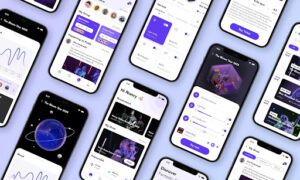The digital age has turned our smartphones into our most important photo albums. From priceless family memories to crucial work documentation, the data on an Android device is often irreplaceable. That’s why the sheer panic of accidentally deleting a batch of important photos—or worse, discovering they have mysteriously disappeared from the gallery after a system update or corrupted SD card—is a feeling every smartphone owner dreads.
For the Android user, the initial recovery process is often straightforward: checking the native Recycle Bin or Trash folder in apps like Google Photos, Google Drive, or Samsung Cloud. These cloud-integrated services offer a safety net, typically storing deleted items for up to 60 days, providing a simple one-tap restore option. However, what happens when that window closes, the trash folder is emptied, or the data was never successfully backed up to the cloud in the first place? This is the critical juncture where the complexity of internal storage encryption and file overwriting demands a dedicated, professional solution.
Recovering truly “permanently” deleted photos from an Android device’s internal memory requires sophisticated software designed to deep-scan the storage for fragmented data that the operating system has simply marked as available space. Choosing the right tool in 2025 means finding a solution that balances high success rates with ease of use and broad compatibility. Our comprehensive analysis points toward DroidKit as the most effective and user-friendly solution for recovering those seemingly lost digital memories.
DroidKit: The All-in-One Answer to Android Data Loss
Developed by iMobie, DroidKit is more than just a photo recovery tool; it’s an integrated Android toolkit designed to handle nearly all common device disasters, including screen unlocking, FRP bypass, system repair, and, critically, data recovery. Its versatility and high success rate, particularly when dealing with the intricacies of modern Android storage, set it apart as the leading choice for 2025.
Dual Recovery Modes for Maximum Success
The core strength of DroidKit’s photo recovery feature lies in its flexible approach, offering two distinct modes tailored to the severity of the data loss:
- Quick Recovery (No Root Required): This mode performs a fast scan of the device’s storage. It’s perfect for recovering recently deleted photos that haven’t been fully overwritten yet, including those just cleared from the gallery trash. The significant advantage here is that it requires no root access, making it safe and easy for beginners and ensuring that the phone’s warranty and security integrity remain untouched.
- Deep Recovery (Guided Root): For photos that were deleted a long time ago, lost due to a factory reset, or lost after a major system crash, a deeper scan is essential. DroidKit’s Deep Recovery mode is designed to search for fragmented data blocks across the entire internal memory. While this process necessitates root access to achieve the industry’s highest success rate, DroidKit provides a straightforward, guided rooting process, making a typically intimidating procedure manageable even for non-technical users.
Beyond Internal Storage
A major pain point for Android users is the loss of media from external sources. DroidKit addresses this with dedicated features:
- SD Card Recovery: It can be used as a standalone tool to scan corrupted, formatted, or damaged SD and microSD cards directly through your computer, retrieving photos and videos lost from the external storage.
- Google Account Extraction: DroidKit offers a unique solution to extract photos and other media files directly from your Google Drive, Google Photos, and WhatsApp backups, giving you selective access to cloud data that might be difficult to navigate through the native web interface.
Why DroidKit is the Best Choice for 2025
The evolution of Android operating systems has made data recovery increasingly difficult due to stringent security protocols and encryption. DroidKit stands out because it continually updates its algorithms to work with the latest versions of Android (including the newest releases of Samsung, Huawei, Xiaomi, and other top brands) where many older or free tools fail.
- No-Root Quick Scan: Recovers recent photos without system changes. ● Guided Root Deep Scan: Accesses the deepest layers of memory for fragments. ● Preview Function: Allows users to view recoverable photos before restoration. ● Versatility: Recovers 13+ file types (Photos, Videos, WhatsApp, Contacts, etc.).
What to Do Immediately After Deleting Photos
The most critical factor in photo recovery success is speed. Every new file, app, or system log created on your phone runs the risk of overwriting the deleted photo’s data fragments.
- Stop Using the Device Immediately: Turn off Wi-Fi and mobile data to prevent background apps from downloading updates or creating new files.
- Do Not Take New Photos/Videos: Avoid using the camera or any application that writes data to the internal storage.
- Use Professional Software: Download and install DroidKit on your PC or Mac, not on the affected Android phone, to minimize the risk of overwriting the lost data.
By taking immediate action and employing a powerful, modern tool like DroidKit, you dramatically increase the chances of successfully recovering your irreplaceable photos and videos, turning a moment of panic into a successful restoration.
Final Verdit
Losing cherished photos from an Android device is a common source of panic, but while native solutions like the Recycle Bin and cloud backups offer an initial safety net, recovering truly permanent data requires professional intervention due to modern encryption. In 2025, DroidKit stands out as the superior solution for Android photo recovery, offering unmatched versatility with its no-root Quick Recovery for recent deletions and its powerful, guided Deep Recovery mode necessary for older, fragmented files, ensuring the highest possible success
rate for retrieving precious memories from internal storage, corrupted SD cards, and even cloud backups.



























